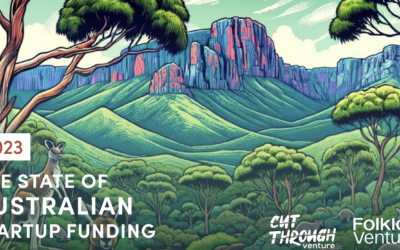2015 was an unexpected whirlwind for those living in – or close to – the startup and innovation sector. Apart from the moving and shaking that characterises a loose grouping of high growth businesses chasing various models of success (funding, IPO, customers, the next month’s salaries), the sudden laser focus provided by the federal Innovation Statement and Malcolm Turnbull’s ascension to the role of Prime Minister was a breathtaking way to end the year.
Culminating in the $1 billion innovation statement, it seemed that the federal government was seriously shifting gears in four key innovation areas – culture and capital, collaboration, talent and skills, and government. But the statement, spanning 24 policy areas and 11 portfolios has a key provision. It kicks off from 1 July 2016.
One of the key – and most lauded policy changes – deals with taxation changes for venture capitalists and investors. This policy provides capital gains tax relief as well as tax off-setting arrangements designed to encourage investment. As Denham Sadler explains in StartupSmart:
Under new taxation changes, venture capitalists and other investors that have invested in a startup for more than three years will be exempt from the capital gains tax for 10 years and receive a 20% non-refundable tax offset on investments capped at $200,000 per year.
A 10% tax offset for capital invested in Early Stage Venture Capital Limited Partnerships will be introduced and the government will “relax” the same business test that denies tax losses if a company changes it business activities.
For all its good intentions, however, it seems that the federal government has placed a whole raft of fledgling startups into dangerous territory. Dozens of new startups have been released from their 2015 accelerator programs and are now expected to fend for themselves. This means that promising Muru-D backed ventures like custom sports gear manufacturer, Disrupt and social logistics platform FreightExchange could find themselves hanging tough, trying to close out funding rounds while investors wait for the tax breaks six months away. And the same challenge applies to any business seeking investment before the end of the financial year.
In the 2015 StartupMuster survey, 48% of respondents indicated that they had been in business for around 12 months. A whopping 75% indicated that they’ve been in business for two years or less. These figures bear out the harsh reality of what it takes to “fail fast”. Clearly startup founders, entrepreneurs and investors take significant and quantifiable risk in bringing these new businesses to market. Expecting these new businesses to wait six months for new investment while the machinery of government grinds is to misunderstand the pressures faced by startups.
If, indeed, Australia’s innovation future relies on the success of these ventures, we may need to look at what it takes to thaw the frozen investment market between now and June 30.



